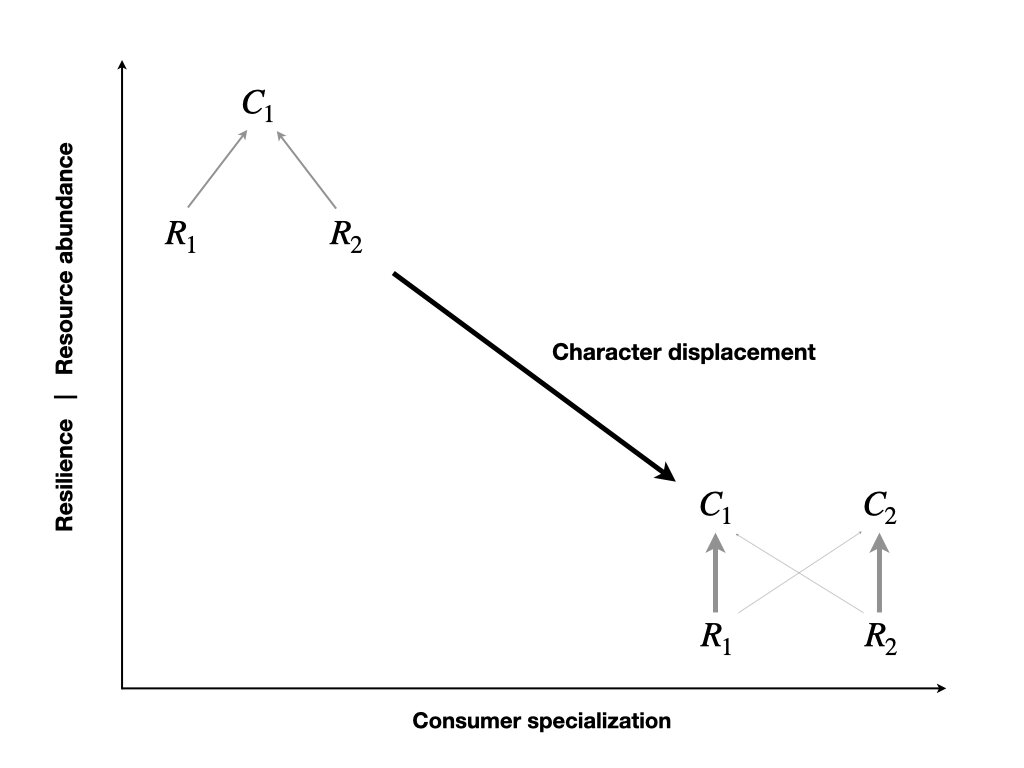Science
We found that a single gene controls the coexistence of species in an experimental food web.
The American Naturalist
We provide a general and accessible guide that covers the basic, step-by-step process of how to approach, understand, and use ecological theory in empirical work.
Journal of Ecology
We provide an overview of how ecologists define, quantify, compare and predict resilience across different ecological systems and subdisciplines.
Journal of Animal Ecology
We discuss the diverse ways by which food webs could be genetically and plastically rewired by climate change.
The American Naturalist
Using a mathematical model, I found that the coevolution of competitors makes food webs less resilient to environmental change.
Evolution Letters
Through a field experiment, we found that the simplification of food webs can constrain the adaptive potential of remaining populations to future environmental change.
The American Naturalist
We show that asymmetric specialization leaves a fingerprint on the biogeography of mutualistic interactions.
Ecology and Evolution
We reveal the contingency rules governing antagonistic interactions in a plant’s microbiome.
Journal of Ecology
We show the importance of phenotypic plasticity in determining ecological interactions in species-rich communities.
Ecology and Evolution
We show that spider web architecture influences prey specialization and spider stoichiometry.
Nature Ecology and Evolution
We discuss how genomic data can help answer five key questions about eco-evolutionary dynamics.
The American Naturalist
We show that plastic responses to warming can stabilize predator-prey interactions.
Ecology
We show that genetic resistance to a plant pathogen can shape non-trophic interactions with spiders.
PNAS
We discovered that intraspecific genetic variation can play a key role in structuring food webs, which may in turn affect community persistence.
The Canadian Entomologist
We show that arctic caterpillars move between shrubs to access new resources instead of to escape parasitoids.
Functional Ecology
We found that genetic variation in a suite of plant traits was important in determining interactions with a diverse herbivore community.
Proceedings B
We show the adaptive function of a predator-deterrent signal that is frequently given in the absence of predators.
Animal Behaviour
We provide the first quantitative analysis of rattlesnake striking behavior on free-ranging prey.
Ethology
We provide the first quantitative analysis of rattlesnake chemosensory behavior while lying in ambush for their prey.
IEEE Robotics and Automation Magazine
We used a robotic squirrel to tease apart how squirrels ‘talk’ to snakes with their tail.























